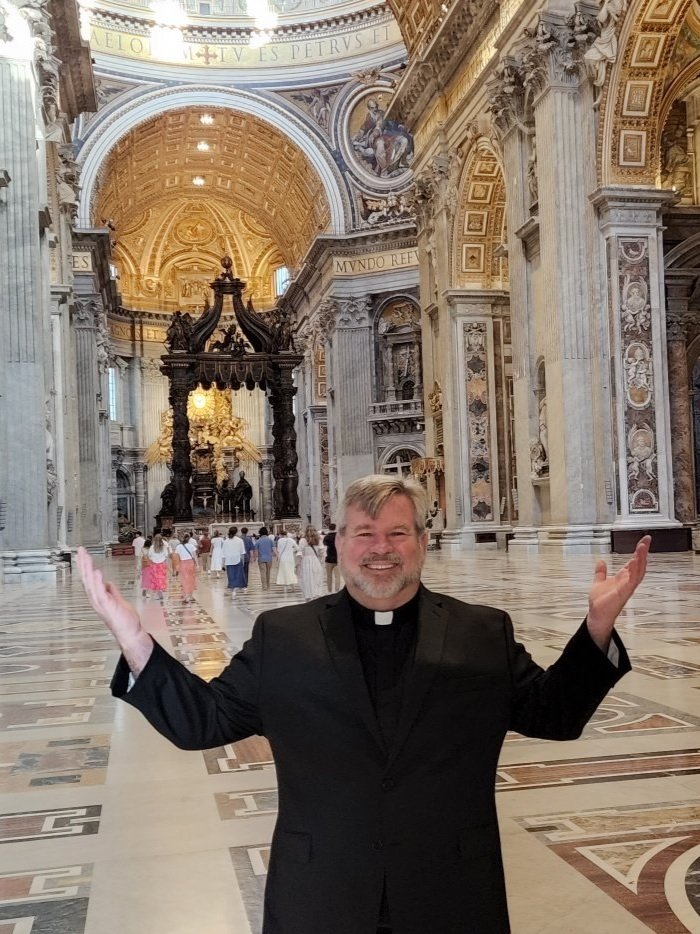“Let us walk on the Way with our brothers and sisters gently, peacefully, and amiably.”
-Saint Francis de Sales
Recently I organized a religious pilgrimage with my parishioners to Rome and other religious sites in Italy. I am not sure if you, dear reader, have had the opportunity to make a religious pilgrimage, but our Catholic Church has a strong historical tradition of Her members – priests, religious, and lay people - making pilgrimages as a part of our spiritual and religious life. I can even remember in high school reading Chaucer’s Canterbury Tales, from the 1300s AD, about a group of 30 rather ridiculous characters making a religious pilgrimage through England on the way to Canterbury Cathedral. I think Chaucer would have had an absolute field day writing an epic poem about our group of 30 pilgrims as well. Most of our group were Spanish speakers from Jesus the Worker Catholic Church in Fort Myers, Florida – an immigrant church where I minister. We also had a few English-only speakers, a Brazilian couple who spoke Portuguese, a small group of Guatemalans who preferred to speak in a Mayan Indian dialect, and two delightful Filipinos speaking Tagalog, as well as our Italian guide and Italian-only speaking bus driver. Part of the general mayhem of the trip were different languages being spoken at once at every moment in the airports, buses, hotels, restaurants, and holy sites. The ages of our pilgrims varied as well from several seniors on one end of the age spectrum to several children on the other. One would imagine that the differences in personalities, the diverse emotional, physical, and spiritual needs, and the numerous conflicting cultural expectations would create a vortex of inestimable stress and anxiety not only for the priest but for pretty much anyone on this trip. And I must confess there were moments - when individuals from our 30 got lost, or sick, or were grumpy, unreasonable, or difficult. But, more so, the moments we shared were tremendously pleasurable, enriching and rewarding, humorous, deeply religious and spiritual, and made all the more meaningful by the diversity of our group.
“We are most tempted to see in others what we find most disconcerting about our own actions and motivations. As we grow in our ability to accept and love ourselves, we are more likely to treat others in the same manner.”
- Saint Francis de Sales
Some of the religious highlights of our trip included masses on different days in the Basilica of Saint Peter in the beautiful chapel of Saint John Paul II, near the high altar, and also in the Clementine Chapel, adjacent to Saint Peter’s tomb beneath the Basilica in the “grotto” where 90 other pontiffs are also laid to rest. Michelangelo’s Pieta enthralled my Latino Catholics; the image of Mary grieving over the body of her son Jesus visibly moved them. We celebrated Mass in the Basilica of Saint Paul Outside the Wall, where the tomb of Saint Paul is located and in the Catacombs of Saint Callixtus, where 6 of some of the earliest Popes who were martyred were laid to rest, as well as many other Roman martyrs including Saint Cecilia. We felt very special and excited to have an audience with the Pope arranged by the chancery of our Diocese – we arrived at Saint Peter’s with bright yellow tickets in hand ready for our close encounter with the Holy Father – and it was then that we realized there were 100,000 other people with bright yellow tickets in hand who were also just as excited for their audience. The energy of that crowd in Saint Peter’s square is indescribable and powerful! Every stranger sitting nearby wants to share their faith story and why and how they are there. And for those few hours, they become the best friends of your life, even though you will never see them again! We were luckier than most as Pope Francis passed us, quite closely, twice in the Pope Mobile, smiling and waving. He spoke meaningfully and gently to the crowd in his address, like a kind father, in many languages of the world (in 5 of the 6 languages of our group!).
In Rome, we experienced the roots and early history of our faith, as well as the magnificent colossal grandeur of our Catholic Church, and the artistic beauty of humanity’s greatest monuments to God. We traveled to Assisi and visited the simple and colorful Churches of Saint Clare and Saint Francis. We prayed close to Saint Clare’s incorruptible body and by Saint Francis's tomb, before we absorbed the simple beauty and spirit of that gracious, medieval city on a mountain and her kind people. We marveled in the spiritual revolution of Saint Francis – his embrace of service to God through the virtues of holy poverty, chastity, simplicity, and a love of God in nature and humble humanity – a renewing Christian spirit that enlivens our Church and our Catholic faith to this day.
We visited in the south of Italy, San Giovanni Rotondo, the uncorrupted body of Saint Pio of Pietrelcina, the 20th-century mystic, whose life of sanctity, and miraculous activities speak to the common Catholics among whom he has grown so popular.
“Heaven and Earth are not distant enough to separate the hearts which our Lord has joined.”
Saint Francis de Sales
Before heading home, we 30 spent our final day in rest and celebration on the Isle of Capri – wandering the streets of the village, eating seafood and drinking limoncello, boating in the Mediterranean Sea, and jumping into her deep crystal blue water beneath the ever-rising white cliffs. It is said pilgrimages are a microcosm of the Christian life. If this pilgrimage was a very brief expression of our Christian walk on this Earth, then I think Capri was a small taste of our hoped-for heavenly homeland! I like to think now that Chaucer’s kooky 30 maybe also enjoyed a special day together in Canterbury to celebrate the end of their pilgrimage. It is hard to say since his tale ends, unfinished, before arriving at their ultimate destination.
In a short time, a group of strangers forms a mobile Christian Community, on a pilgrimage. For those days we live together, pray together, eat, sleep, and travel together. Maybe sometimes we will rub one another the wrong way or teach one another something new about the Christian life, but we grow close in a short time, and experience exceptional places and moments together. Then it ends. We separate, and we return to our own lives and routines. On occasion in the Church, we see one another through the crowd and share a secret smile, knowing we have shared something good, special, and holy – an encounter with the Divine - that no one else but our group will ever know. That secret smile, and the memories it contains, are quite a gift of God. A great encouragement and help in our larger pilgrimage of life. Often the word “pilgrimage” is used to describe an individual Christian’s journey through this life unto eternal life – it encompasses our personal spiritual growth, understanding Christ’s call, in the midst of the ordinary, to walk with Him on His extraordinary Way. Returning from this pilgrimage I think it is a wonderful analogy for the Christian life. A holy journey, an unfinished tale, in which we are all companions. We are not on this pilgrimage alone, but we walk together. We share the joy, the trials, the moments of exultation and of suffering, taking responsibility for helping one another along the way, to encounter the Lord and His love. We find our joy and contentment in the joy and contentment of those who we lead, follow, and journey beside, always filled with the joy of what awaits us at our unfinished journey’s end.
“Let us walk joyously dear souls, among the difficulties of this passing life… These pains will have an end when our life ends, after which there will be only joy, only contentment, only eternal consolation.”
-Saint Francis de Sales
Father Patrick O’Connor, OSFS
Pastor
Jesus the Worker Parish, Fort Myers, FL







